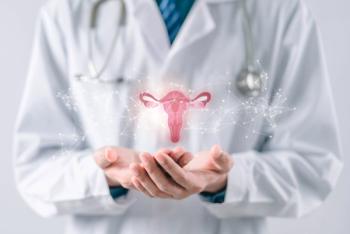
AAGL 2012: 30% of Women with Low Rectal Endometriosis Have Associated Ileocecal Involvement
There is a prevalence of ileocecal involvement (IC) in women with deep, infiltrating endometriosis (DIE) according to the study presented at AAGL.
There is a prevalence of ileocecal involvement (IC) in women with deep, infiltrating endometriosis (DIE) according to the study “Ileocecal Involvement is Associated with Increased Severity of Low Rectal Endometriosis,” presented 41st Global Congress of the American Association of Gynecologic Laparoscopists. Charles Charpon, MD, of Universite Paris Descartes presented a prospective, observational study that determined the prevalence of IC and evaluated the correlation between IC and the severity of low-rectal endometriosis.
The study included 244 (74 IC+, 170 IC-) patients with diagnosed low-rectal endometriosis who had complete surgical removal of lesions. Seventy-four of the 244 women had ileocecal involvement.
While there were no significant differences in the level of surgical complications and transfusion between groups of women, the IC+ group (n=74) had more advanced endometriosis (month) (63.3 vs. 52.2; p=0.05) than the IC- group (n=170), with a higher quantity of lesions, deeper lesions (p less than 0.05), and an additional sigmoid lesion (p less than 0.01). The IC+ group was also older (34.2 vs.32.5; p less than 0.05), had more previous surgeries (less than 0.05) and had a more severe rAFS score (p less than 0.001).
A multivariate analysis indicated an association between IC and DIE as evidenced by:
• A longer duration of symptoms (greater than 5 years; odds ratio=2.2; 95% Confidence Interval: 1.2-4.0))
• An association with endometrioma (OR=2.0;95%CI: 1.1-3.6)
• More lesions and a more severe rAFS score
• A greater prevalence of sigmoid lesions(OR-2.6;95%CI: 1.4-4.7).
Chapron recommends that practitioners perform an appropriate work up in order to pre- or per-operatively diagnose ileocecal involvement.
Newsletter
Get the latest clinical updates, case studies, and expert commentary in obstetric and gynecologic care. Sign up now to stay informed.










